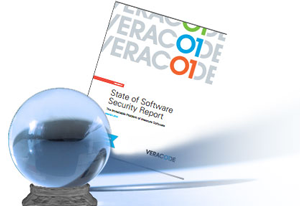Veracode, Inc.,
the leader in cloud-based application security testing, today released a
feature supplement of its annual “State of Software Security Report”
which showed that 84 percent of web applications from public companies
were deemed unacceptable when measured against the OWASP Top 10, a
widely used industry standard list of critical and most frequently
exploited web application vulnerabilities.
Non-web applications such as backend operational systems and desktop
commercial applications in use at public companies also showed a poor
performance with a 63 percent failure rate when measured against the
CWE/SANS Top 25 – an industry standard list of critical non-web
application vulnerabilities.
Unlike previous Veracode State of Software Security reports, this
feature supplement hones in particularly on the vulnerabilities in the
software applications of publicly traded companies, following new SEC
guidance issued in the US last year relating to disclosure of
cybersecurity risks in company filings.
“Companies – particularly public ones – are beginning to be measured
by regulators and investors on the strength of their cybersecurity
solution and ability to protect intellectual property and customer data.
This is a fundamental shift,” said Chris Wysopal, founder, CISO and
CTO, Veracode.
“Companies can put all of the other cybersecurity controls in place
but if there are application weaknesses, hackers have the will and time
to find and exploit them. The issue simply cannot be neglected anymore.
Over the last year some of the most prominent breaches that were carried
out against the most preeminent names in business took advantage of
weaknesses in software applications to infiltrate traditional perimeter
defence security controls. This should be a wake up call. Particularly
in public company disclosures, the issue needs to be discussed in much
more detail.”
Public companies fare no better than companies at large on software security or developer knowledge:
Despite public companies having greater compliance requirements and
usually more funding, only 16 percent of public company web applications
passed initial testing compared to 14 percent for all companies at
large – as measured by compliance against the OWASP Top 10 industry
standard. The performance for non-web applications is worse for public
companies, with 38 percent passing against the CWE/SANS industry
standard opposed to 42 percent from all companies.
Reliance on third-party applications is widespread, but formal risk assessments are not:
With many applications being bought as commercial-off-the-shelf
applications, custom developed outsourced projects or
software-as-a-service, managing the risks inherited from third parties
is an important factor. However, only one in five public companies has
performed a formal verification on a third-party application, suggesting
they are operating under a false sense of security or making an
assumption that software procured from third-parties is secure upon
entry.
Flat prevalence rates since 2012: With the two most
frequently exploited vulnerability types - XSS and SQL injections -
showing a statistically flat incidence rate from the first quarter of
2010 to the fourth quarter of 2011, the results suggest that new
vulnerabilities are being introduced at the same rate as known
vulnerabilities are being remediated.
Many companies defining custom policy chose to measure applications against PCI: Over 40 percent of public companies who defined a custom policy chose to measure their application against PCI or the OWASP Top 10 standard which underpins PCI. The main focus is on vulnerabilities that are most frequently exploited such as SQL Injection and Cross-site scripting.
Report Methodology
This Study of Software Related Cybersecurity Risks in Public Companies captures data collected from 126 public companies over the past 18 months from applications that were submitted to Veracode’s cloud-based application security testing platform. These applications include both internally developed and those procured from third-party vendors.
One of the goals of the State of Software Security Report is to create greater awareness and security intelligence about the risks of unknown vulnerabilities lurking in everyday applications. The results are aimed at creating a greater sense of urgency around the problem of insecure software, while also giving organisations the information they need to quickly take action. Veracode also emphasises the ease with which organisations can incorporate software testing into current development cycles.
Download the Report
Veracode’s Study of Software Related Cybersecurity Risks in Public Companies examines additional software security topics in context of application threat space trends, including details on the most commonly exploited vulnerabilities, risks associated with public company software applications, as well as factors driving application security policies in public companies. For complete report findings, download a copy of the report by visiting: http://www.veracode.com/soss

No hay comentarios:
Publicar un comentario